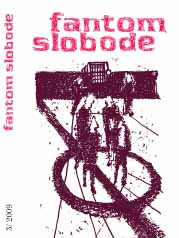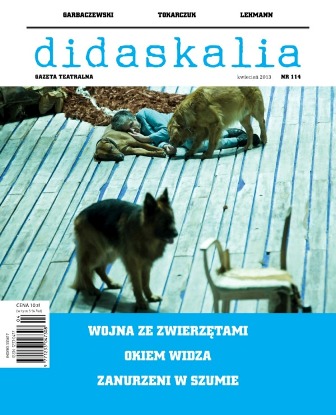
We kindly inform you that, as long as the subject affiliation of our 300.000+ articles is in progress, you might get unsufficient or no results on your third level or second level search. In this case, please broaden your search criteria.


In the article the author opposes widely spread attitude toward digital image. With pain and nostalgia he establishes extinctive traits of classical photography, by affecting the deep causes of the process from phylosophical and religious point of view.
More...
The portrait series "Les Fous" created by Theodore Gericault during the 20s of the 19 century is unusual in its designation. Comparing the purpose and character of realization of those portraits with photographic images of sick people during the second half of the 19 century, suggests that the paintings perform the function of photography before its invention. Publications such as the "The Clinical Cases is Saint-Louis Hospital in Photography", "Photographic Review of the Hospitals in Paris", "Iconographie photographique de la Salpetriere" are examined as photographical examples.
More...
The matter of interest to this text is generally the "easiness" in contemporary photography and the way it affects the image and the approach towards it. As the reader will get to know, the easiness has both positive and negative influence on the author and the audience. Having art history in mind, my understanding for this matter is that we should aspire to considering the very art medium as a historical achievement through which certain people's skills are expressed. The medium in itself /even though it creates prerequisites and has certain predetermining features/ is nothing but a tool, waiting to be utilized in the best possible way.
More...
The article studies some of the theoretical views about the nature of photography and its specific traits. On this basis the author develops his interpretations concerning topics such as, chance, authenticity, objectivisation, time, connection between image and archetype, speech and image.
More...
When photography offers the human body, what is it that it does and why is this gesture so irresistible? Is the image an image of something? Image of what is the image of the body? The tension in this question - a tension stretching between the desire to refer to the thing and its impossibility - is what captivates the gaze. The image never approaches us, nor does it await us. We are the ones who, if they wish so, can approach it but there is no room for even such a deceptive closeness because once it begins to approach, the gaze loses the vital distance of the relation with the object it desires. The image is more than a presence. And the gaze is not the first but the last, the least important connection to it.
More...

Photography legitimizes the new socialist woman, which otherwise lives only in the realm of ideas. The party has carefully given shape to her "matrix" that produces strictly reglamented images of "super women", which fearlessly plunge into the whirlpool of the socialist everyday life - somewhere between the "desired" and the "real".
More...
Artist and critic Rafaelo Kazakov introduces the work of American photographer Joel Peter Witkin. Excerpts from Witkin's most recent book "Disciple And Master" provide inroads in the creative process of the photographer and the historical references and parallels his works almost always imply.
More...



The article traces some of the major phases within the history of the photographic image — since its beginn' lg up to modern day. The emphasis is set on George Eastmann and Oscar Barlac's inventions, the democratization of the photographic process which, having lost a part of its 'magic' hallo, has become accessible to the general user. The text places the work of the ruthor, attitudes of the viewer and the photographic work in the framework of increasingly rapidly developing modern technologies.
More...
The article affects the appearance of the still life as a genre in photography. This fact is illustrated with attempts to imitate the painting techniques, and the appearance of still life in photography should be associated with those attempts rather than independent development of genre with solely a photographic position. In the beginning of 20 century the advent of still life is provoked in most cases by the idea of studying shape, fracture and illumination. During 1950-1960s the progress of still life is imposed by the appearance of colour photography. Realization of ideas is displaced from structure and symbolics towards colour and realism. In the last years of 20 century still life follows the tendency of fine arts. As a result of globalization and developed informational technologies, artistic work and ideas have no limits.
More...


Dramatist Marcin Cecko speaks about his work on the Poznań premiere of Balladyna (the Polish Theatre in Poznań, prem: 25 I 2013) – in particular, about what prompted him to “rewrite” Juliusz Słowacki’s play, his inspirations while writing the script and the process which led him to change his script and conception for the production. Cecko raises the issues of posthumanism and biopolitics and also attempts to grapple with the Romantic paradigm. Balladyna represents a turning point in Cecko and Krzysztof Garbaczewski’s collaborative activities – up until now, both of them have rarely spoken out about political issues.
More...
A review of The Valley, a play directed by Agnieszka Olsten (the Contemporary Theatre in Wrocław, prem: 9 III 2013) and based on Olga Tokarczuk’s novel Drive Your Plough over the Bones of the Dead. Świerkosz opines that the play is a not a reconstruction of the appeal contained in Tokarczuk’s “moral thriller” that humans should rethink their relationship with animals, but instead an attempt to implement this appeal using the means at a theatre’s disposal. It worked out this way due to three dogs being invited to appear in the production. However, in Świerkosz’ view, the language in the production comes too close to sounding like a superficial manifesto, thus squandering the opportunity to make the most of the critical potential and tension-filled atmosphere of the novel.
More...
A review of two plays based on Svietlana Alexievich’s book Voices from Chernobyl: The Oral History of a Nuclear Disaster: Czernobyl. Last minute, directed by Agnieszka Korytkowska-Mazur (the Dramatyczny Theatre in Białystok, prem: 2 III 2013) and Chernobyl Prayer, directed by Joanna Szczepkowska (the Studio Theatre in Warsaw, prem: 8 III 2013). The author notes that at the heart of both plays lies the conviction that the most vital motif in Alexevich’s reportage “arises from the reciprocal relationship between stage and audience”. Nevertheless, in Tomaszewska’s view, only the creators of the Warsaw play successfully became “advocates for the forgotten, marginalized victims”. The audience at the Czernobyl. Last minute production easily maintained a safe distance from the onstage events, because, in the final reckoning, these events were of no concern to them.
More...
Agnieszka Jakimiak’s Provincial Artists, directed by Weronika Szczawińska (Powszechny Theatre in Łódź, prem: 8 III 2013), as the author of this review claims, alludes quite freely to Agnieszka Holland’s film. The production concerns itself with theatre, but does not deal with it within the framework of a wider socio-political story with a plot. It could be likened instead to loose musical variations. The form of this production forces a modicum of creative labour on the spectators, who are meant to expand on the production according to their independent inclinations, as well as highlighting that the spectator issue is extremely important in theatre and should be the point of departure for any postulates, discussion or discourse.
More...